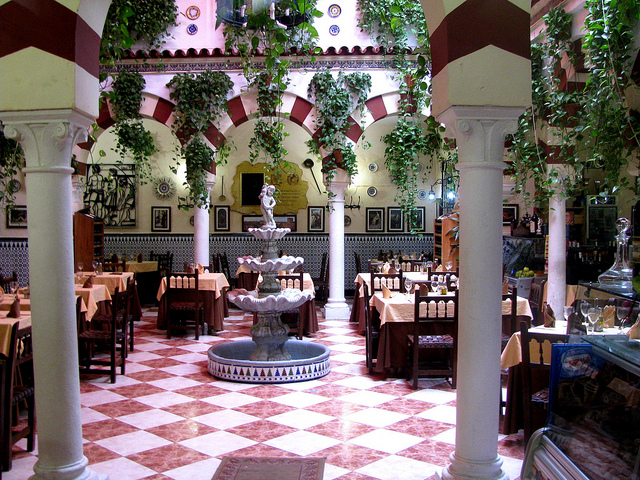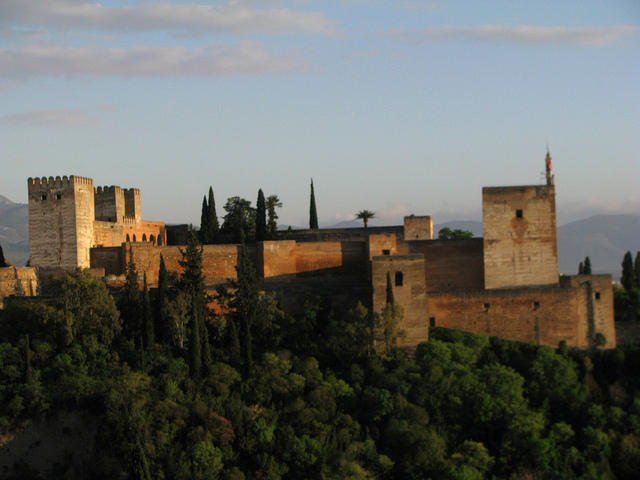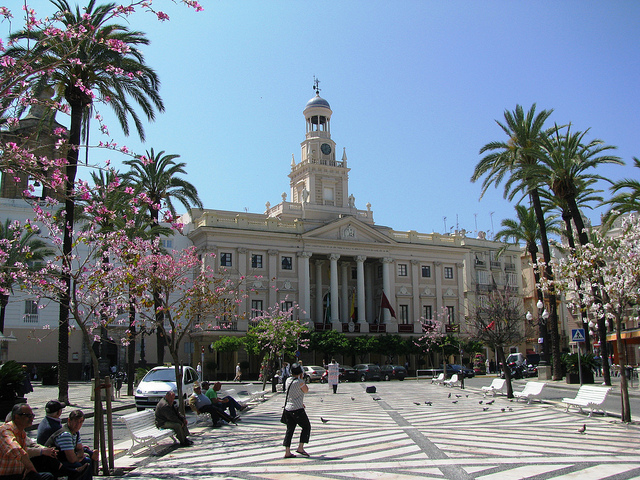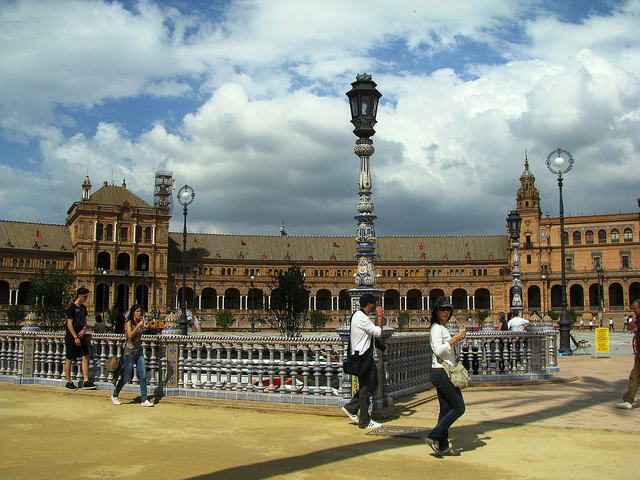My two weeks in Spain were rapidly coming to a conclusion – I had already visited some of Andalusia’s most famous places: Granada and the Alhambra and the Costa de la Luz with side trips to Cadiz and the Pueblos Blancos. My last two days were spent in Seville, admiring the architectural glory of Spain’s richest city during the colonial era. Now I had two more days left in the south of Spain and set out to drive east along the flatlands of the Guadalquivir Valley to Cordoba.

Finally in the early afternoon of April 22, 2011, I arrived in the city and had to drive through the convoluted old town of Cordoba numerous times and ask several locals before I was able to find my abode for the next two nights – the Hostal La Fuente, a very respectable, clean and reasonably priced guest house right on Calle Fernando, one of the main streets in downtown Cordoba.

The street was blocked off for one of the scheduled Easter processions, so the staff told me to drive down to the other side of the Guadalquivir River and park the vehicle over there at no charge. It turned out to be a great piece of advice. My interior room was clean and functional with a private bathroom, and it had a window facing the interior courtyard of the hotel. Travelling to Europe can sometimes be done very inexpensively – I did not spend more than 30 Euros for most of the hotel nights I had booked for this trip in Europe. Some of my hotel rooms were as inexpensive as 22 Euros a night.

After settling in I started my sightseeing excursion of Cordoba. Just a few steps down the Calle San Fernando and off to the right I started heading into the most historic quarter of the city. Cordoba has a long standing history: the region surrounding the city has been settled for more than 30,000 years. During Carthaginian rule the city was referred to as “Juba”, and after the Roman conquest, it became the capital of the Roman province of Hispania Ulterior Baetica.

The real heyday of Cordoba came from the 8th to the 13the century when Cordoba was ruled by the Moors until it was reconquered in 1236 by King Ferdinand III of Castile. Cordoba has the second largest old town in Europe which is today a designated UNESCO World Heritage Site. Many of the buildings adjoining the narrow, confusing streets date back 700 years or more. Given this impressive history, I was really looking forward to exploring this captivating city.

Strolling past restaurants and countless souvenir shops I made it to my first destination: the famous Mezquita – Cordoba’s mosque – cathedral, constructed between 784 and 987 AD during the Umayyad Caliphate of Cordoba. Unfortunately, the entrance doors to the Mezquita were locked and I was unable to get inside this outstanding structure. I still admired the inner courtyard, the Patio de los Naranjos, and the bell tower. Exiting at the northern gate of the complex I continued walking through the narrow, twisted streets of the Jewish Quarter where I came across a tea shop (a “teteria”) called “Salon de Te”.




